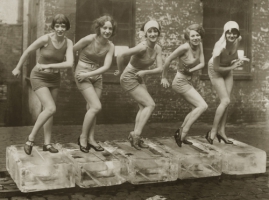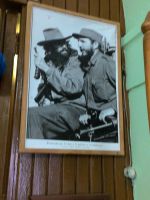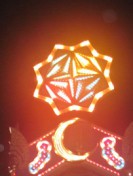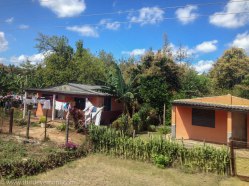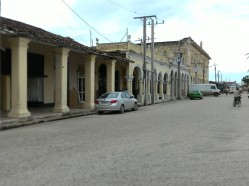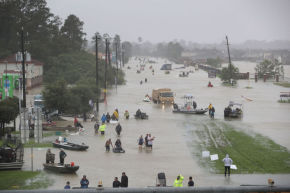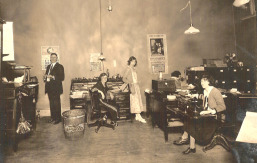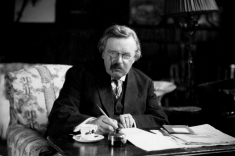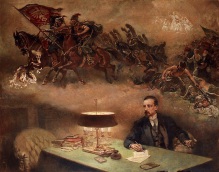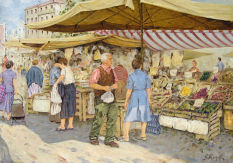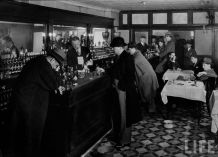2 0 1 7
Cuba? Why Cuba?
Part 3
Rug Rats and Revels
Cuban Kids
Open. Curious. Polite. Well behaved. Handsome. And ever ready to pose for my camera. That’s how I found Cuban children. And every one of them brought a smile to my face.
In the dark of the first night, families came to the main square. The children ran free as the parents clustered here and there to gossip or listen to the several musicians that brought guitars. They weren’t noisy but I heard laughter and everything happened at a dead run.
Got out early enough the next morning to see a few of them on their way to school, proud and eager in their starched and ironed, government-provided, school uniforms. Two girls and a boy. Nine or ten, maybe. They noticed me watching and the three of them straightened, almost like soldiers. I asked if I could take their picture. The two girls instantly struck a pose. Everywhere, Cuban kids loved to have tourists take their picture.
They also demonstrated pride in the regalia of the school uniforms. I supposed, that for many of them, these handsome clothes might have been the best they owned.
“We have the lowest student-teacher ratio and spend five times as much on schools than war - the opposite of what the United States does.” Fidel Castro.
The Castro created school system is state-operated and attendance is compulsory for children from age six to the end of “basic secondary education” when the student is around 15. All students wear school uniforms with the color and style denoting their grade level.
Teachers and schools maintain a close relationship with their communities and families, and they expect parents to enhance the learning process. The government keeps the teacher to student ratio at a level of 12 to 1. Along with basic literacy and Cuban revolutionary history, the curriculum includes dance, gardening, health, and hygiene.
Oh yes, the combative and revolutionary sense of solidarity taught in the curriculum was demonstrated by the blurred art work centrally placed in the entry to the primary school we visited.
I found it interesting that teachers volunteering for rural areas get a basic uniform, a blanket, a hammock, two textbooks, and a gas-powered lantern (to teach lessons at night after the work day.)
A classroom full of attractive, bright-eyed, and expectant 5th graders waited for us. This could have been a set up. These kids were attentive and disciplined (the class next door was a bit more raucous). They were curious about us, asking us questions in fairly good English. Did we like Cuba? Where had we been? What had we seen? The best question, at least for me: Were any of you teachers? They seemed impressed that I had taught life skills and work skills to disabled students.
When our turn came, I asked what they wanted to do when they grew up. Doctor. Scientist. Hotel worker. Car mechanic. Artist. Actor. One wanted to be “technology”, which the teacher interpreted as electronics repair. Kind of sounded like American kids.
Revels
Las Parrandas de Remedios
A “parranda” is a spree, a carousal. This revelry takes place in the days around Christmas. Though “Las Parrandas” has grown to include other Cuban towns, Remedios gave it birth. The town created a museum dedicated to it. One of our stops and one of the most memorial.
In 1820, we are told, young Father Francisco worried about the poor turnout at late mass between December 16 and Christmas. To attract parishioners, he encouraged the town’s children to gather noisemakers, cans, horns, bugles, rattles. To bang, blow, and shout, hoping to get the people out of bed. Maybe if they were up anyway they would go to mass.
They did but, as people will do, they decided that, since they were up, they might as well join the children in the streets and party. The street revels evolved. Organized bands formed in each of the town’s neighborhoods. These bands began to compete with each other for the honor of being the best performance.
The Parranda grew over time. Organized bands began playing in the streets and competing for the honor of “best performance.” Neighborhoods created opulent light shows. Street parties, dancing, lighted floats, and parades began. Explosive and often homemade fireworks were added.
The basic genius of the Cuban people, and their ability to make do with what they had, showed dramatically with the light display left set up at one of the Parranda workshops. When turned on, the display went through a “program” of flickers and rotations. No computer or digital signals here. A small rotary motor spun a barrel studded with bent nails. As the barrel turned, the nails made contact with switches, turning parts of the display off and on as did a wind up music box. Pure analogue.
Today, the town is divided into two camps, the rooster of San Salvador and the hawk of El Carman. The museum displays a map marking the town’s division. The rivalry is intense but friendly.
I’ve added The Parranda to my bucket list. One future Christmas season will find me there.
<< New image with text >>
Cuba? Why Cuba?
Part 2
The Remedies
Sometime after the three policemen and two dogs puttered off on their sidecar motorcycle, our luggage rolled off the carousel. Attendants loaded them into the blue and white, Chinese issue tour bus, as we got to meet fellow tourists. Massachusetts, D.C., New Jersey, New York, Michigan, Nevada, etc. All over 50, most bleeding hearts, many wanting “normalization” of America/Cuba relations. All were friendly, warm, and curious about Cuba.
We rode off into a glorious sunset, excited and eager. Maybe a bit worried about nightfall on a dark Cuban highway.
Our destination, Remedios. San Juan de los Remedios, Or Saint John of the Remedies. A couple of hours southeast of Havana.
I wondered about that name. There is a St. John of Portugal and Spain, called John of God, a soldier turned monk that founded the Brothers Hospitallers of Saint John of God, who care for the poor, sick, and insane. But he was still a soldier when the town was named.
So I guess it was named for its main church’s patron San Juan Bautista (John the Baptist). Of note, its other patron is “the Virgin of the Buenviaja”, the Virgin of the Good Trip. That had to be an omen.
My pondering ended soon enough as the view out the bus window swept everything else from my weary brain.
Here was rural Cuba in a gathering dark.
What most resonated with me was the luxuriant, scruffy green of the open spaces contrasted by the seeming deteriorated, ruinous appearance of the peoples’ housing. I first thought we watched early stages of recovery from Hurricane Irma. As our tour continued, the answer emerged more complicated.
The roadside grasses grew wild and ragged but I saw men, crews and individuals, hacking at it with machetes. At a couple of places a horse and cart waited placidly for the grass. I assumed some of the farmers used the dregs as hay for their stock. Of course the Cuban government could have hired them to keep up the road. If they were, most of these men cut in swathes, a patch here, a patch there. Behind the roadside, the land was mostly open fields though knots of forest land held sway. Only a few of them contained grazing cattle. Two had a handful of goats the grazed. Some of the land showed crops. Sugarcane and yams I recognized. Possibly some black beans. I knew what tobacco looked like and saw none along these bumpy roads. I could not be sure of seeing the two other major Cuban crops, coffee and cacao.
I saw several men in front of small barns cleaning and sorting yams. Intent on their work, almost none of them gave our tour bus a glance.
Seeing Cuban homes, lonely farm houses and the few small villages, fascinated me. There were several themes common to them. The main building materials were assorted woods and a uniformly gray stone. Apparently, paint was either hard to find or too expensive. Cubans hung their laundry out to dry, either across the yard or the few balconies found on some homes. I was surprised to find that their clothes were of bright colors. Most houses had a cistern on their roofs. And more than I expected sported antennae. A great many of the homes I saw had been abandoned and often looked like they’d been bombed. They weren’t. I think they’d been scavenged for raw material.
As dark fell in the villages we passed through, I got a rare peek inside these homes. No Cuban home has screens. No screened windows, no screen doors. I don’t remember seeing such a thing the whole trip. Most of these well-worn homes have a porch. Cubans love to be on these porches watching the world go by. A few even gave us a passing glance.
The lights came on. I became a voyeur of life lived in this tropical realm. I peeked. Cubans leave their front doors open at all times.
Two types of Cuban life sorted themselves in front of me. Often side-by-side. Bright and dark. Apparent prosperity and apparent squalor. Again, I later learned that the division is more complex.
To my left, through an open window, a stark, dark bedroom. Gray walls, gray floor. The same color as the cement that covers the outside. An older woman in a tattered white robe bends to make one of the two beds. Bed spreads don’t match but they are smoothed neat and correct. No pictures hanging. No side table. No lamps.
To my right, an open front door shows a brightly lit room. Walls painted a bright yellow. Framed art hanging here and there. Colorful floor tiles. A bookshelf holding books and knick-knacks. A box fan on the floor. Cubans, I learn, are intensely proud of their fans (see the smiling policeman in the picture posted on Part 1).
The Path of the Prince
Our bus pulled up before our hotel, Hotel Comino Del Principe, Hotel on the Path of the Prince, in darkness. We were given just enough time to drop our carry-ons in the room and a quick sprint to the facilities. Supper waited for us just a short stroll down the block.
We were to eat at “La Piramide”, The Pyramid. It was a “paladar.”
The Spanish word paladar translates as palatal. “Palatal” relates to the palate. That’s the palate in your mouth and refers to taste, appetite, appreciation, and enjoyment.
In Cuba the term paladar explicitly refers to restaurants run by “self-employers” and are mostly family-run businesses. They are counterparts to state-run restaurants and seek to provide homemade Cuban food as well as a chance to interact with Cuban citizens. They are “subjected to limitations by the Cuban government concerning the amount and type of products they could offer, the hiring of a labor force and the number of seats they could have.”
To my surprise, the decorative, and often opulent, eateries were set up in Cuban homes. Big ones. Different from the much smaller homes usual for most citizens. Let me put it this way, the homes were part of the restaurants more than the restaurants were part of the homes. I could peek in on the parlors or bedrooms of the owners through various parted drapes or standing screens as I entered the paladars.
La Piramide, like all the paladars I visited, offered a complimentary drink as we sat. A good ol’ mojito, strong, tart, cold, and refreshing. Our hostess told us our choices, though we had a menu. By this she meant the main dish. I think this was where the Cuban government regulations came in for, in every place we went to eat for lunch or dinner, they were the same. Sliced pork, shredded beef, chicken, or fish. They always said the fish was red snapper. Always. Who knows? Bread waited on the table. Often a bit dry and bland. The starter salad varied, often including lettuce, plantain, stuffed tochinos, and other things. Invariably the side dish was black beans and rice. You got offered what they could provide. A lot of black beans and rice in Cuba. The dessert usually was flan (Ummmm) or a mint or berry ice cream.
I’m a beer guy. So I looked for the local beer while most tourists with me went for more mojitos. Local beer was easy. As near as I could see, there are only two beers available in Cuba. Crystal and Bucanero. Both from state-run breweries. I thought Bucanero the best.
If they offer shrimp skip it. That’d be small, once frozen popcorn shrimp overcooked.
Cuba is not a culinary destination, though I found the food hearty, wholesome, and generally fresh.
Before bed, many on the tour sat on the veranda of our hotel giggling over more mojitos. The weather was sultry cool.
To sleep – perhaps to dream… (Hamlet)
Cuba? Why Cuba?
Part 1
The General License
Cuba? Why Cuba?
Well, mostly because we could. Such a trip seemed doubtful a few weeks ago, amid fears of ‘sonic weapons and threats of travel restrictions.
An unintended consequence of such threats – a whole bunch of Americans rushed to go while the going was good. Us included.
Touring Cuba these days requires a “General License for People-to-people Educational Travel for Individuals.” This is a special visa and it’s the only way to go there. It also costs a wad of money.
Kinda strange to me because it allowed travelers to be “subjected” to Cuban propaganda. Your tour guide will be an agent of the regime. That actually turned out to be a plus in many ways. The License gave us access to places and people we would have missed otherwise. More of that later.
The Hundred Fires
From the air, Cuba appeared a lush, verdant emerald. Looks that way on the ground as well but unmowed. Very rural from all I could see from above, at least on the path we took.
Our goal was the airport at Cienfuegos. Cienfuegos means “the hundred fires.” I expected volcanos or brush fires.
The name derives from José Cienfuegos, Captain General of Cuba (1816–19). It is a port city originally of the Taino indigenous people, called by the first Spanish explorers Cacicazgo (translates from the Taino language as "chiefdom". Cacicazgo de Jagua was therefore the chiefdom of Chief Jagua, the headman they met). The town has an interesting history worth looking up.
I expected (I wanted) an airport. As we got ever lower and closer to Mother Earth, I swear on my ancestors, I thought we were landing on a highway. Out the window, a stretch of grass before a line of trees. At first there was not even a fence to hold back livestock. Gods, please don’t hit a cow!
Our pilot drove his vehicle up next to the tiny, patinated terminal. We stepped down onto the tarmac and hoofed into a room devoid of furniture save for the gizmo that would rotate our luggage. We waited. And waited. And waited among the crowd of fellow travelers. Finally, they told us that their x-ray machine broke down. Our luggage had to be hauled to another building where one worked. Another building? Didn’t know there was one. Still, all the personnel were friendly and all the Cuban lady attendants wore short skirts and patterned, fishnet hosiery. None of the patterns matched, except that they all were black.
Also got our first taste of Cuban police. They were pleasant young men, both proud and happy. Loved the government provided police vehicle and its attendant guard dogs.
The Cienfuegos airport was a first taste of Cuba and somewhat foretelling.
Survivor’s Guilt
By Steven D. Malone
Hurricane Harvey was mostly a rain event for me. We are a decent distance from the Gulf, a “no evacuation zone,” and live on one of the highest elevation areas in our county. Makes my biggest worry wind damage to the roof.
We are lucky. Luck enhanced by a certain amount of research before we laid down our earnest money.
Don’t doubt that I love rain and storm. A calloused, selfish passion as I stand awed before the tempest. And I allowed myself to be swept up into the majesty of Harvey – until I turned on the TV.
Desperation and despair, horror and heroics. All the wind and waves a necromancer’s curse could desire. Towns all up and down the coast erased. Towns I’d visited. Beaches scrubbed. Beaches I’d camped on, made love on, surfed, and fished from.
The monster roared ashore, came to a skidding halt, and squatted in the sky above us. Rain and wind. Day and night. For days. Not far from my home, a weather geek measured near forty inches of rain. Forty inches. More to our east.
Everything in this city is relatively new. It was a pimple of a city before World War II. Maybe 200,000 people. Maybe. Oil made it grow. Greater Houston now has five million. Maybe more. Very western (as in Western Civilization). Very American. The TV showed something more like Indonesia during a monsoon.
Despairing, desperate people now drug their babies and meagre belongings through waste deep, filthy water for only the hope of higher ground. A woman drowned in an underground parking lot unable to get out before the rising water found her. A cop drowned, two grandparents and four children drowned, as their cars were swept away. Families pitched tents on their roofs, those that had tents, for days waiting rescue. People began posting phone messages saying a final goodbye to their loved ones. The rains kept coming and the waters kept rising.
Heroism of the heroes kicked in quick enough.
The “Cajun Navy” showed up, bringing their bass boats in from Louisiana. Some high-profile vehicles from the National Guard rolled into – well rolled as close to town as the drowned roads allowed. Businesses with big wheels on their delivery trucks started wandering the streets. In fact, just about anyone with a kayak or an air mattress got into the water. Many of the desperate got helped to whatever piece of high ground could be found.
Shelters opened. Not organized. Just people seeing need that had keys to schools and churches. One big hero, Mattress Mack, even opened his chain of furniture stores to all comers. Donations of blankets, towels, clothing, and food went from trickle to its own flood. Volunteers flowed to wherever they were needed.
But then the dams opened.
A man would have thought that the worst of Harvey was just about spent. The rivers and bayous continued to rise. Our water sheds filled. The storm surge stacked up against the coast. There was nowhere for the water to go.
It was the water sheds. Out west of Houston. Whole square miles of captured flood. More than the levees could handle. Signs of weakening appeared. Something had to give. They had to let the water out.
When the water sheds were built they were surrounded by corn fields, sugarcane fields, and cattle ranches. Houston expanded and this land became primed for development. Upper middleclass development. The west end became saturated with suburban neighborhoods. These half-million dollar houses sat between the burdened water sheds and the flooded rivers.
Overnight these environs filled with eight or more feet of water.
My parents, when they lived, lived there. The families of several young ladies I dated lived there. In my misspent youth, I helped build many condos, apartments, and commercial spaces there. Today, the trash piles lining the streets there make the area look like 1945 Germany.
High, dry, and lucky, Hurricane Harvey was a rain event for me. A Biblical epic played out on TV, to the sound of thunder and wind. Like a car wreck, I could not take my eyes off it. Couldn’t stop counting my blessings.
Couldn’t help feeling guilty. So much hurt and desperation only a few yards to my east and south. I never even lost power. Not even Wi-Fi.
My wife and I had to do something to help. Not much of a salve for our survivor’s guilt, but these folks needed so much.
As soon as the rains lightened we drove. We bought out all the blankets at the nearby Good Will outlet. Towels, Clorox, baby food, diapers, cat food, litter, and more at the local Target. Found two nearby churches that had opened shelters. Delivered our goods. Sent money to appropriate charities. Offered our guest bedroom to friends with water in their houses.
Not much really, but we were so lucky. High, dry, and safe when so many others were not.
Then we went home to watch Irma sweep the Caribbean.
Survivor’s guilt.
A Strong Female Character
Women in the 1920s
By Steven D. Malone
I have some wonderful female characters coming to life in a mystery I’m now writing. Rich, strong, fully alive women, real enough to whisper in my ear their stories as I fit them in the novel.
The novel takes place in the Jazz Age, a time when women were seen to be emerging from the “cultural cocoon” imposed upon them before the First World War.
Or so they say.
I challenge this. As a writer and researcher of Historical Fiction I have found many strong females, in all eras, whose stubborn wills and farsighted vision stood as a model for my characters. Without much effort I could see them as representing women whose stories did not get written. From Valeria Messalina, Joan d’Arc, Alyson (Wife of Bath), to Sophie von Anhalt-Zerbst (Catherine the Great).
You can include on that list my ancestor, Rhoda, widowed pioneer and one of the first women listed on Mississippi tax roles as a ‘head-of-household’ (rare for women in the 1840s). My aunt, Berna, who joined the others of her high school team in rolling up her gym shorts to show their legs in the class picture. And my grandmother, Virginia, a college educated teacher who was a dancing, smoking, flapper in the 1920s.
Politics, Work, and Fashion
I think the War caused women to more fully realize that politics affected their daily lives. Sound familiar? More and more, many started to take politics seriously. With Women’s Suffrage and their new right to vote, they worked their way into political committees on all levels and began to influence the political agenda.
Women were on their way.
I didn’t get carried away. The final goal of women in the 20s continued to be marriage. Most women quit their jobs when they married. However, in the 1920s, 15% of white women and 30% of black women with wage-earning husbands worked. By 1930 one in four held paying jobs.
Wage earning jobs gave women independence. Society accepted that they were independent. They could and would make choices in education, work, marital status and careers. In public and in home life.
That meant they (many of them) became “flappers”. Flappers symbolized this new freedom.
Deposed were the previous restrictions on behavior and dress.
However, becoming flappers, women had to have money and free time enough to play the part. Working women became consumers.
Well, maybe.
Itinerate salt sellers, I remember, always included colored yarn, dyes, needles, jewelry packed on their mules. Notions, clothing, perfumes, shoes, lace crowded the shelves of dry goods stores in the Old West.
Media of the times, moving pictures, newspapers, and magazines, often showed these women smoking. Clothing stores, hair salons, and cosmetics manufactures seriously pursued female buyers. The first safety razor designed and sold to women showed up in 1915 as the new fashions lost their sleeves and raised their hems.
That short skirt, short hair, heavier makeup, and a fun-loving attitude symbolized the flapper. Symbolized the new freedom. Flappers raised those hems, drank prohibition liquor, smoked and defied norms of proper behavior. Hemlines, straight or uneven, gradually crept up, and waistlines dropped, Tubular, sleeveless styles featured beading and fringe. Flesh-colored stockings were worn with decorative shoes.
Ladies, you were on your way.
The women you might want to get to know.
Fanny Brice – “If I can’t be the prettiest girl on stage, I’ll be the funniest.”
Considered one of America’s great clowns, Fania Borach (1891 to 1951) worked in burlesque, vaudeville, radio, drama, film (the first woman to be cast in a “talkie”) and musical revues (including nine Ziegfeld Follies) as an “ethnic (Jewish) comic” in the usually male dominated field. Look up Sadie Salome and Baby Snooks.
Never comfortable before a camera, Fanny declined to pursue a career in television.
With many other women in the 20s, Fanny would be a working mother and a single parent. She died of complications from a stroke in May of 1951.
Janet Gaynor – “A petite, wistful, waif-like bundle of joy.”
Janet, always determined to find her way in show business, covered her bases on her way to being the first woman to win an Oscar (Were they called Oscars then?) in the first Academy Awards in 1928. She, with her sister, enrolled in a secretarial college to work as she tried to get into films.
She got bit parts in Hal Roach comedies, some westerns, and landed her first big role in “The Johnstown Flood” (1926). This role earned her one of the 1926 WAMPAS (Western Association of Motion Picture Advertisers) Baby Star awards along with such notables as Mary Astor, Joan Crawford, Dolores del Río, and Fay Wray.
Her Academy Award was the first and only one given for multiple roles in one year. Three: “Seventh Heaven”, “Sunrise”, and “Street Angel.” Before 1986, Janet was also the youngest actress to win Best Actress.
In the 1930s, Janet appeared in the original “State Fair” and “A Star Is Born.” She retired from movie making to raise her son but returned in 1957 for one last film, “Bernardine.”
In 1982, Janet was injured in a taxi crash, from which she never recovered, dying of pneumonia in 1984.
Aimee Semple McPherson – “The Four Square Gospel Church.”
She was one of the first female evangelists, the first divorced evangelist, and the founder of her own brand of Christian church.
The pretty, dynamic, crowd charming evangelist, cut her teeth through her mother’s membership in the Salvation Army and the organization’s training toward religious work. By high school, she began to question her religious beliefs. Guided by her future husband, Robert Semple, she converted to his Pentecostal church. The couple went to China to spread religious teachings. He died soon after arriving, stranding his pregnant and penniless wife. Aimee returned to the Salvation Army after giving birth.
In 1913, she married grocery clerk, Harold McPherson, divorcing him five years later. After that, Aimee became an untrained lay evangelist of Pentecostal-type revivalism in Canada. She perfected her skill and rising to the forefront of the “professional revivalism,” engaging in a “hand-to-mouth” existence on the “tent revival’ circuit along the east coast of the U.S.
Aimee gravitated toward larger cities in America, England, and Australia, gaining huge turnouts with her faith healing and “speaking in tongues.”
In 1923, McPherson settled permanently at her Angelus Temple, Los Angeles, California. The Temple seated over 5,000 people and became the center of her “new breed” of Christian church. She called it “the Foursquare Gospel”. “A complete gospel for body, soul, spirit, and eternity.”
The popular evangelist flourished and prospered on sensationalism and publicity, engaging in slander suits (one against her daughter), publicly quarreling with her mother, and participating in wildly public vendettas with other religious groups.
She died of a sleeping pill overdose in 1944. Her Foursquare Gospel church thrives in America today.
So many choices.
Mary Garden, director of the Chicago Opera Association. Edith Cowan, first female elected to the Australian Parliament. “Ma” Ferguson, first female governor of Texas. Josephine Baker touring with “The Negro Review.” Greta Garbo. Agatha Christie. Muriel Siebert, first female to have a seat on the N.Y. Stock Exchange. Elsie Eaves, first woman elected to the American Society of Civil Engineers. Mae West. Coco Chanel. Bessie Smith, “The Empress of the Blues.”
I didn’t have the room to write about them all.
In October, 1929, Black Thursday crashed the Stock Market and the ensuing Great Depression ended the Flapper fad.
Call Me Mr. Advice
Steven D. Malone
Recently I received a letter from a new writer asking questions about his genre and about becoming a writer in general. With certain omissions, here is the letter I received and the advice I gave him.
Mr. Malone,
I am working on a book involving my family in Texas prior to the civil war and a mutual friend is giving me some pointers. He suggested that I reach out to you because he said you did a wonderful job of geographical and societal scene setting of the era in your book Sideshow at Honey Creek.
My book is going to be a biographical fiction account and he thought you might have some general pointers on the subject that helped you with your book creation. Also, what is the best way to get hold of a copy of your book via Amazon? I would like to read it to get a feel for how you dealt with the period.
Thank you in advance for your consideration.
Sir,
I'm not sure what you really need from me specifically but I'll give you my best guesses.
On geography and society:
Keyword searches on google & Bing are a great tool. Everything from history and societal mores to geography and historical people.
If or when you narrow down the physical locations in your story, find towns in and around the area. The local libraries there will often have works by any local historical society giving histories of the towns and counties. Pay particular attention to any works by local genealogists. I've found loads of insights into the early settlers (pre-Alamo and pre-Civil War), the way they lived, and even the conditions they lived in. This can be a chore because you must wade through a lot of dry data (persons and relatives, etc) to get to it. Often these ancestors had letters kept by their descendants that have been scanned into the genealogies. Chambers of Commerce in these towns might have websites and often include a lot of history.
Mexicans were thick in Texas then as now. Don't overlook any translations of Mexican ranchers, townspeople, and the Catholic Church writing in that era.
Strangely enough, I got some visual information from Google Maps' satellite view of some of the more open areas. Just zoom in.
Pay close attention to your weapons. I'm sure you know there were few revolvers and no repeating rifles or holsters like is found in the movies.
On Writing in general:
There are many good references on writing good fiction. Much of it is free online. Read widely and compare notes. Many writers differ in their wisdom and their approach to writing. Select what seems right for you but remain flexible as your writing evolves.
That also goes for writing in the genre "historical fiction." Get books from the library or find a good used bookstore. These can be pricey new. Again there is a lot of good stuff free online.
I don't know where you live but look around for some writers' critique groups. We are usually a generous bunch, eager to help out with positive feedback. Once more, you can be selective in what information comes from them. If you don't live near one of these groups, there are some online. Be selective, even picky, if you're interested. There are trolls out there. (Avoid those that want money. There are a lot of scammers out there that will cheat you. Research them closely.)
Let me be honest with you. Getting my books out took a long apprenticeship. There's a big learning curve in getting to know what you need to know. I made many mistakes. I still do.
Grow a leather skin. The feedback from other writers is paramount but this feedback can chafe. Try to get used to positive criticism for it's important. Anything they may say is wrong with your work is probably right, but what they say will fix it will probably be wrong.
Get a good "copy editor", that's a reader a step above those in a critique group. Get a good proofreader. These don't necessarily have to be paid professionals but they need to be astute readers. They may even be the same person. I had pretty good luck once with a 5th grade English teacher. They will know how to correct your grammar but they'll need to know what makes a good book.
Look into good book cover designers. I didn't and I'm not particularly happy with one of mine.
Also learn about "the writer's platform" on line. You'll need one. The platform will include your website that will sort of provide a business card to your work, and your so-called "social media" presence. Put an email account on the site that is not your personal one. A good way to find readers and network with other authors is through email, and twitter and facebook, etc. That's how I interact with our friend. That's for later though. Get that book worked on for now.
It's hard to find publishing houses and agents for a first time writer. You might finally decide to self-publish. There's a learning curve there too but there's a lot of information out there as well.
My website is the quickest way to get to my books on amazon. Scroll down and click on the links to the two historical fiction books.
The website is:
http://www.stevenspen.com
The best advice for writers that I ever saw is: keep your day job. Don't expect things to go quickly and don't expect to make a lot of money. Few writers get rich at it.
I wish you the best of luck. If there is anything more I can help with, let me know. Stay in touch
.
Sincerely,
Steven Malone
What problems are you encountering as a new writer? Has your involvement as an experienced writer been like this? What was the “learning curve” for you as you evolved as a writer?
Let me know. Send me an email.
Maybe I’ll post a follow up and include your comments or wisdom. We all need help.
The Five Things I Love About Writing
A Contretemps
Steven D Malone
Early this week I looked up from yet another sheet of paper filled with words…
“Gods, I really love this,” I said to the far wall.
Because of my last post on how much I hate writing, I took a moment to think about that utterance. All said and done, I truly love to write. I love doing it though I rarely think about that love. The saying of it does help.
Making a list of why I love writing has got to help as well. They, the capital “T” They (whoever they may be), say lists help. So here follows my list of why I love writing:
1. The act of creation. That’s the first. Scribbling out a tangible object of the ephemeral fugue of the thoughts drifting around in my head. Something I can hold on to. Something fixed in reality.
2. The magic. Creation of “story” in my head seems magical, like what comes out from the waving of a wizard’s wand. I’m lucky that way. I do not really understand it but something sparks in my imagination. The spark grows on its own. I don’t, like many I know, structure or outline these stories. I just watch as the landscapes blossom and fill, the silence is peopled, and conflicts and accords emerge. It’s actually quite amazing.
3. The birth of characters. One of the best things. One of the magic things. In every way, at the root, all the writer’s characters are the writer, him or herself. Can’t really debate that. However, from the barest germ of a character needed for a story, mine seem to fill out. To become real, living people. They do this on their own. No help from me. They are individual and separate. They think things I do not think. They choose things I do not choose. They take the story they’re in to places I did not think it would go. And, since I write mostly historical fiction and so stuck to certain constraints of history, they manage to arrive in the historical setting when and where they are needed. Go figure.
4. The stuff that never gets published. Another best thing I love though no one will ever see it. Here are the most personal but least “universal” things. Here is where my dreams get fulfilled and my rants get spent. Here is where my deepest fantasies play out. Here is where the dark things hide. The extremes. The catharsis. The treasures I will not share.
I know. I know. Conventional wisdom often says that’s what should go into a writer’s writing. Dreams and rants and fantasies and dark things should go into one’s writing. Looking at bookstore shelves clearly show that they do. However, the books that are good include dreams, rants, fantasies, and dark fears that we humans all share. The “universal” dreams and fears. The non-universal parts of just me don’t get seen. Remember all the poems you’ve read and hated. You hated them because they had nothing to share with your soul. Too specific to the writer, not the world. Best left unpublished.
Still, those deepest things did get played out.
5. The sharing. Back in the dark ages of my lost youth, I decided to “become” a writer because of all the authors that wrote all the books that entertained me. The authors that brought the smile, or got the heart thumping, or swept me away to places I’d never been. I wanted to do that. What power.
Some few people have liked my work. I hear from them on social media. Once in a while, I actually get to meet them. From them comes the warmest glow. The grandest sense of validation. It almost drowns the visceral dread of rejection for letting anyone see anything I write.
I’m sure there are more reasons I love writing. Kind of think, though, that they will be twists on what’s already listed.
Love it or hate it. Doesn’t matter. I can’t stop. Like breathing, I have to do it.
Are you a writer? What do you love about writing? About being a writer? Tell me about it. Email me. smalone@stevenspen.com
The Eight Things I Hate About Writing.
Steven D. Malone
Early this week I looked up from yet another blank sheet of paper…
“Gods, I really hate this,” I said to the far wall.
To further postpone dealing with said blank page, I took the time to think about that utterance. I often say that about my chosen art. Of course, I have often said that about anything I chose to bring bacon to the table. But, these days, the saying of it helps not.
Making a list might help. They, the capital “T” They (whoever they may be), say lists help. So here follows my list of why I hate writing:
1. I am unworthy. What in creation do I have to write about anything that is worth reading? I am no Hugo. No Conrad. No Hammett. Great themes I avoid. What do I have to say about the great themes of literature?
Actually, that’s not true. They do, after a fashion, enter into my stories. Endurance. Loyalty. Survival. Betrayal. Lust and love. Commitment. Hope. More. These may be accidents of character creation but they all end up in my stories.
The answer to “worth”, in reality, is a grand SO WHAT!
So what. Just who the heck, what the heck, am I writing for. In the end, I write for me. In reality, who, what, or why are you writing?
2. The world is so depressing. How can I write while all this crap is happening around me. It’s too depressing. The mood is ruined. The weight is too heavy to bear.
Again, the answer to the world in flames is the same as the answer to worthiness. So what.
The damned planet and all upon it has limped along a grand sight longer than I have. If we are so destined, it will flop along for eons more after I am gone. Or, it won’t. There is not a dang thing I can do to any real effect. Might as well spend the time writing. Until, by death or annihilation, my pen and I do part.
So turn off the technology, insert ink cartridge, and scribble.
3. It’s so hard! Writing is hard. Did I ever think it was not. Despite the fact that most people see writers staring into the sky, that staring is us at work. Forming inspiration into structured language. Storming through the tumbling ideas for one that clings. Drifting through a lot of nothing when there are no clinging ideas. Burning eyes, cramped hands, sore butt, aching back from hours upon hours wrestling with pages of paper and glowing screens. Editing and editing. Proofing and proofing. Rewrite upon rewrite. Waiting for the galley proofs. Waiting for the post on amazon going live. Waiting for the hard copy. Burning from critics calling the baby I birthed ugly. Dancing the exuberance on the few times someone liked it. Spying sales figures and weeping when there are none to be had.
There is no answer for that other than to endure. Grow a pair. Keep on keeping on.
4. Comma. Comma. Comma. Commas are my worst thing. You’d think I’d be better at grammar. Teachers pounded grammar into my head year, after year, after year. Reading reaches the level of vice in my soul. Book, after book, after book. Most professionally proofed. Many nearly perfect in their punctuation. Over 80, that’s 80, inadequate rewrites of one of my books.
Any of it soak in? Not near enough.
Nothing stings more than someone telling me that I might be a “writer” but they couldn’t tell because my grammar was so bad that they stopped reading.
It took me way too long to realize the necessity of an editor. To let my Scots/Irish tight fist to let go of the money to pay one. (Or, to treat an editor to a ritzy dinner. Thanks Mary Jo.)
5. The distractions. TV. Internet. The thousands of books crowding my walls and floors. The distractions are way more fun than writing. And they are so easy to reach. Much better to read about the latest archaeological dig. To hoot or cry over the latest politician’s tweet. To get lost in the new movie or book.
I shouldn’t go there. I can’t go there. Switch it off. Close it up. Stay home. Write. Dang it, write.
6. I don’t like what I’ve written. It’s crap. I’m bored.
Writing is boring. Writing is frustrating. Long past the joy of first love for the newest inspiration, the machinations, the mechanics of getting it all down on paper, just doing it is way boring. Way frustrating.
There is a huge difference from the mind’s visuals and words on the page. The map is not the ground. Words are a structured invention. The grunts and moans attempting to send thought to another person.
Well, the answer to that is to write fun. Make it fun. I’ve had fun writing. I must do that again. Fun, not necessarily funny. Game the words. Find something in the scene or the character that is fun to include. It’s a fun search. Play with it. I can see when an author has embraced his art with a sense of how fun it is to so create. You can see the works of those for whom (is whom right?) it is a chore.
If it’s fun to write then, maybe, it will be fun to read.
7. No validation. Well, damn little validation.
I rarely tell people I’m a writer anymore. Most often what I get back is: “I need to show you my poetry so you can tell me if it’s any good.” Most often it’s not. The poet forgot to spend some time studying universals. Universals are what all people share. It is the commonality that make Shakespeare, Keats, Yeats, or their like, readable. The poems are so personally enmeshed as to have little connection with the rest of us. Or, I get, “Hey, you need to write my biography. I’ve lived a very interesting life.” They haven’t. Write your own. I haven’t the time.
As with any narcissist, what I really wanted to hear is, “How can I find a copy?” or even, “What’s it about.”
Writers wait forever for a response to, or a review of their book. Hell, they wait long enough for someone to buy the thing. Ask amazon how many ebooks they’ll publish this month. Our little droplet drowns in a sea of others.
Like a poet, we drop our feather into the Grand Canyon and listen for the echo.
8. But I’m so lonely. Yep, writers write alone. Being born, dieing, and writing. We do this alone. Cloister. Nook. Cranny. Shaded hillside. Unshared park bench. Coffee shop corner. There we’ll be.
Writing is, as many know, a private and personal thing. It has to be that way. If I share it before it’s finished the pristine virginity of the work tarnishes. As helpful as they are, I remain reluctant to put my unfinished work before my critique group. It took getting used to.
This is a voluntary thing for writers. Most of them. I read that Dumas wrote standing at a podium before a bevy of enchanted female groupies. Don’t know how he did it.
If you want to earn a glare from me, come into my space with some stupid facebook joke or asking what I want for dinner. Call me with a telephone solicitation, I dare you.
There is no real answer to the loneliness. Tis the nature of the beast. Join a writers’ group. Weed through the twitter spam for a conversation on your twitter account. Buy a cup of coffee for some cute patron at the shop. Talk to a neighbor. Find a way to take a break and connect with a human being.
Those are the eight reasons that I hate writing. That I hate being a writer.
Doesn’t matter. I can’t stop. Like breathing, I have to do it.
Grocery Shopping & the Writer
By Steven D. Malone
I am the grocery shopper in my family. This duty fell on me when my wife and I were breaking several glass ceilings. Her as bread winner. Me as stay at home Dad.
I mean what I say about that. We made that transition 27 years ago. Few couples did that back then. Of course, my wife actually liked working for a living. Me? Not so much. At least not at a dress up, go to the work place, chore around for eight hours, come home to supper kind of day.
Before folks go accusing me for being a “rounder”, as happened more than once, ask a mother if child rearing with all its inclement duties, frustrations, and loneliness is that damned easy.
I once brought treats, paper plates, and cookies, which I had planned and shopped for, to my son’s school for an event. I helped set up the tables, placed and arranged my stuff, and over saw the children. I cleaned up after. On the way out the door, one of the mothers told me to be sure to thank my wife.
Thank you, wife.
To continue.
The grocery shopping fell to me. Bu default. I’m the one with all that extra time, being home and all. I found the exercise much more enjoyable than I thought it would be. Once some man, it would be a man, likened shopping to hunting, i.e. “women’s hunting.”
I approached it that way. Stalking the wild boxed snack. The freshest fillet. The cheapest condiment. The sale isle.
Grocery shopping became a study for me. I learned. I experimented. I hunted through all the nooks and crannies.
I armed myself with lists and coupons. I learned to read labels. Calorie counts. Sodium and sugar content. Vitamins added. Strange chemical compounds. The dreaded “sell by” dates. The color of the twisty on bread loafs.
Did you know that you could measure the freshest bread by the color of the twist tie? I didn’t.
Of course I joined the favored customer club and proudly scanned my membership card at the self-checkout register.
When I rounded the dark side of my 55th birthday, I signed up for the senior discounts. (They recently dropped that privilege and got less of my money because of it. Other stores see me enter their automatic doors, sale circular in hand, now.)
My favorite grocer gives me a price break on gas if I spend enough each month. Ten cents a gallon per $100s spent. There are months when I get as much as 50 cents off per gallon. Gods, we eat a lot.
The people, staff and fellow shoppers, always fascinate.
My favorite grocer hires challenged adults as sackers and some as stockers. A wonderful thing. I watch them grow and succeed as workers and as human beings. One, a beautiful girl, has married since I first noticed her. Another very hard worker did force me to begin using the “self-checkout” machine. He’s fast and, in his way, very efficient but speed is all for him. In all these years he’s never learned the art of taking care. My bread gets crushed. My bananas get bruised. They are all focused, determined, and eager. Good employees. Got to love them.
I’ve gotten to know the assistant at my self-checkout area. We talk weather. We gossip. We tell tales of our lives.
I see Islamic women in their beautiful scarves who avoid looking directly and appreciate that I do not look directly at them. I see young mothers and fathers bringing along their kids. The kids trying hard to be good helpers but whose busy eyes never miss their favorite cereal or brightest candy. Old women in their scooters getting in everyone’s way but trying to maintain a bit of independence. Some are accompanied by their health care workers. I see men, some older than me, also charged with bringing home the groceries even if they are not bringing home the bacon.
Not so secretly, I relish my status as an astute shopper.
That does not mean I get much respect.
The IRS still views my writing career as a hobby. Enough people buy my stuff and maybe the tax man will be less condescending. Most of the population, including the “revenuer” does not grasp the efforts made by someone whose daily work is done by what looks like stares out the window. Trust me, I see little of the view of my backyard.
My hard focused, carefully planned, safari to Piggly-Wiggly, or wherever, is considered, not a disruption of my work day, not something essential to family life, but simply an errand.
That said, it’s an acquired taste and an acquired skill. From the prospective of my advanced years, I sit satisfied and even proud of doing it. And it’s a service, eagerly done, for my family.
Go ahead, arm yourself, know your territory, keep a sharp eye. Buy some groceries today.
The Mystery of Mysteries
By Steven D. Malone
The criminal is the creative artist; the detective only the critic.― G.K. Chesterton
Because I’m writing a series of sleuth novellas, I thought I’d take a gander at what some of those writers thought about their sleuth stories, and their art. Most interesting, as it turns out. Writing is still writing.
I write historical fiction and historical fantasy. But an accident put me onto Dashiell Hammett and from there onto Raymond Chandler. The dam burst and I was off on writing a mystery. A historical mystery but a mystery.
As with most writers, I turned to google. Inquiring minds do want to know. There’s a lot out there. Most of us are generous and eager to share the mechanics of our art. We can find good rules of thumb, formulas, and guidelines. Heck, I even found a number of mystery plot generators.
Our task as sleuth writers is to make our readers hear, feel, and above all, see. That is all and that is everything. — Joseph Conrad
I learned to try first person POV. Something I’d never done before. This lets the reader live vicariously through the narrator and be closer to him. Even makes the action keener felt. First person can allow your protagonist to be naive, especially in his or her first cases. However, naive is okay. Stupid? Never. Readers will not like dumb or inane. That probably goes for antagonists. Antagonists can overlook something that ends up with them catching themselves but the protagonist needs to end up noticing.
It’s always good to throw in some romance. These days it’s expected. Try for the unexpected twist or the unpredictable liaison. Too often a pairing has been done to death. Make it fun. Make it spicy.
Sidekicks are good. They are friends and foils. They prevent the hero from getting too full of him or herself. Or, the opposite, they can prop up the hero in difficult times. They can offer different perspectives. They can watch the hero’s back.
Throw in some action. Sleuthing is a dangerous business. Murderers do not like being hunted or caught. They are not nice people - generally. Who knows, maybe our antagonists have mitigating circumstances and it’s a sad day when they’re caught.
The best advice I found was “make it believable.” It is essential that your sleuth is involved for more than idle curiosity. Give strong reasons for the hero to be tenacious - especially when facing danger. As a murderer has motive for the crime, the sleuth must have motivation for getting to the solution.
Now for the masters:
I chose to have them comment on; being a writer, plot, tension and conflict, characterization, and style. It’s a bit of a hodgepodge and I will not attribute all of their comments for the sake of length.
That said, the authors I studied include some of the following: Raymond Chandler (RC), Jim Thompson (JT), George V. Higgins (GVH), William Bernhardt (WB), Ross MacDonald (RM), PD James (PJ), John Le Carre (JL), Patricia Cornwell (PC), Sue Grafton (SG) Joseph Conrad (JC), Arthur Conan Doyle (ACD) Catherine Louisa Pirkis (CLP) Georges Simenon (GS)
For all of you considering such stories, researching these writers will be fun and well worth your time. Get at it.
The Writer:
Writing doesn’t get easier. Every novel is a first novel. (JL)
We all need to look into the dark side of our nature -- that’s where the energy is, the passion. People are afraid of that because it holds pieces of us we’re busy denying. (SG)
The faster one writes the greater the output. Besides, going slow means trouble. You might be pushing your words instead of being led by them. (RC)
As a man writes his fiction, his fiction is writing him. We can never change ourselves back into what we were, any more than I can change these printed words. So we have to be careful about what we write. (RM)
Open your mind to new experiences, particularly to the study of other people. Nothing that happens to a writer – however happy, however tragic – is ever wasted. And, write what you need to write, not what is currently popular or what you think will sell. (PJ)
If you do not seek to publish what you have written, then you are not a writer and you never will be. (JVH)
I am not the law, but I represent justice so far as my feeble powers go. (GVH)
I suppose I shall have to compound a felony, as usual. (ACD)
My task is to make you hear, to make you feel,and, above all, to make you see. That is all, and it is everything. (JC)
Plot:
There is nothing like shooting a man while he's down.(PC)
A good plot was one which made good scenes. A good story cannot be devised; it has to be distilled. (RC)
There are thirty-two ways to write a story, and I’ve used every one, but there is only one plot – things are not as they seem. (JT)
I see plot as a vehicle of meaning. It should be as complex as contemporary life, but balanced enough to say true things about it. The surprise with which a detective novel concludes should set up tragic vibrations which run backward through the entire structure. Which means that the structure must be single, and intended. (RM)
It has long been an axiom of mine that the little things are infinitely the most important. (ACD)
Tension & Conflict:
Competing egos, status struggles, clashes of styles and personalities — this is the stuff conflict thrives upon. (WB)
We all need to look into the dark side of our nature -- that’s where the energy is, the passion. People are afraid of that because it holds pieces of us we’re busy denying. (SG)
Murder is murder, as much a curse to the slayer as to the slain, and cannot be a matter of indifference, whoever the dead may be. (EP)
The only thing better than getting away with doing a crime was to get someone else convicted for having done it.(DF)
Now is the dramatic moment of fate, Watson, when you hear a step upon the stair which is walking into your life, and you know not whether for good or ill. (ACD)
Violence does, in truth, recoil upon the violent, and the schemer falls into the pit which he digs for another. (ACD)
Jealousy is a strange transformer of characters. (ACD)
Characterization:
Men drive off bridges and drink too much because of women like you. (JE)
Too much virtue has a corrupting effect. (SG)
Pretty was hardly the word. With her fierce curled lips, black eyes and clean angry bones she must have stood out in her graduating class like a chicken hawk in a flock of pullets. (RM)
“Character determines action,” she said, slowly, at last. “That is the secret of the great novelists. They put themselves behind and within their characters, and so make us feel that every act of their personages is not only natural but even — given the conditions — inevitable. (CLP)
I would like to carve my novel in a piece of wood. My characters—I would like to have them heavier, more three-dimensional ... My characters have a profession, have characteristics; you know their age, their family situation, and everything. But I try to make each one of those characters heavy, like a statue, and to be the brother of everybody in the world. (GS)
Style:
The ideal mystery was one you would read if the end was missing. (RC)
To exceed the limits of a formula without destroying it is the dream of every magazine writer who is not a hopeless hack. (RC)
The most durable thing in writing is style, and style is the single most valuable investment a writer can make with his time. (RC)
Never tell your reader what your story is about. Reading is a participatory sport. People do it because they are intelligent and enjoy figuring things out for themselves. (GVH)
There are times when an old rule should be abandoned or a current rule should not be applied. (SG)
In the end…
I sat at the feet of the masters and so that I may, the gods willing, stand upon the shoulders of giants. These things are what I learned. I give them to you, both as writers and readers. Go grab a good mystery and a cup of coffee. Hunker down. Solve all your mysteries.

